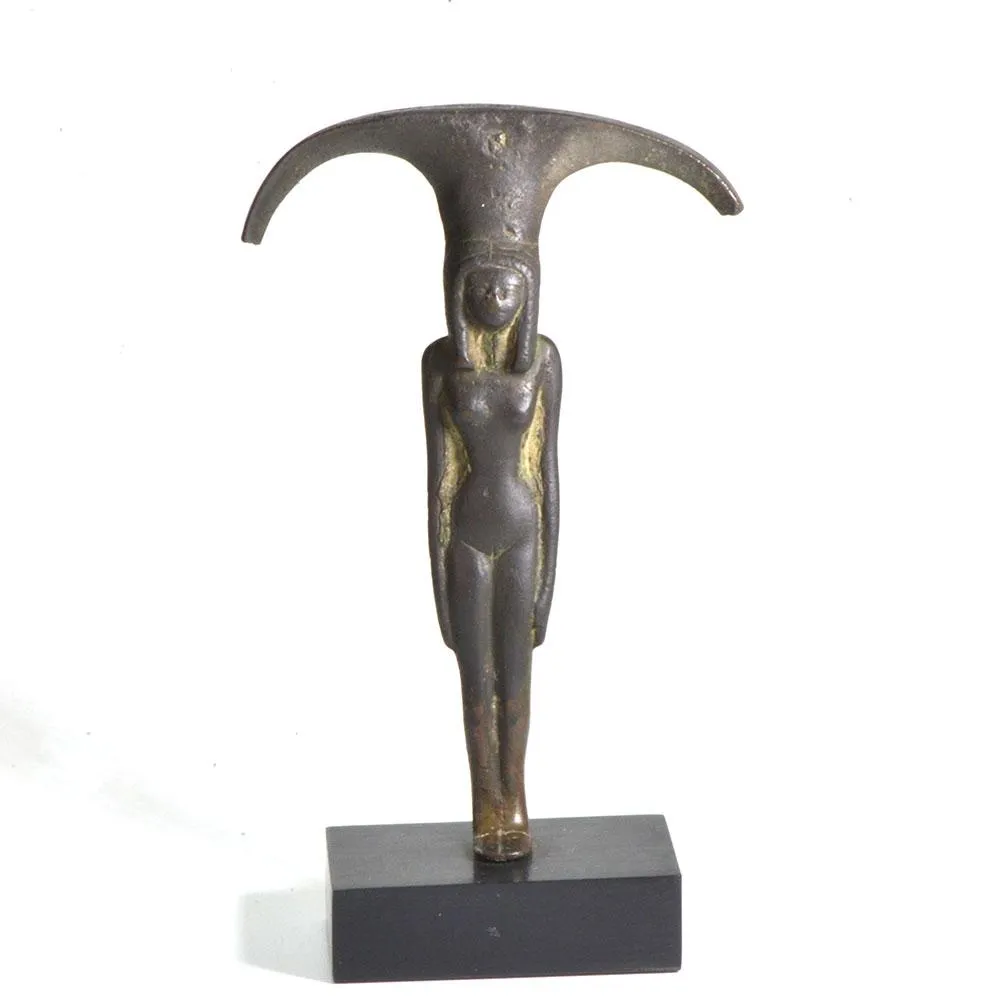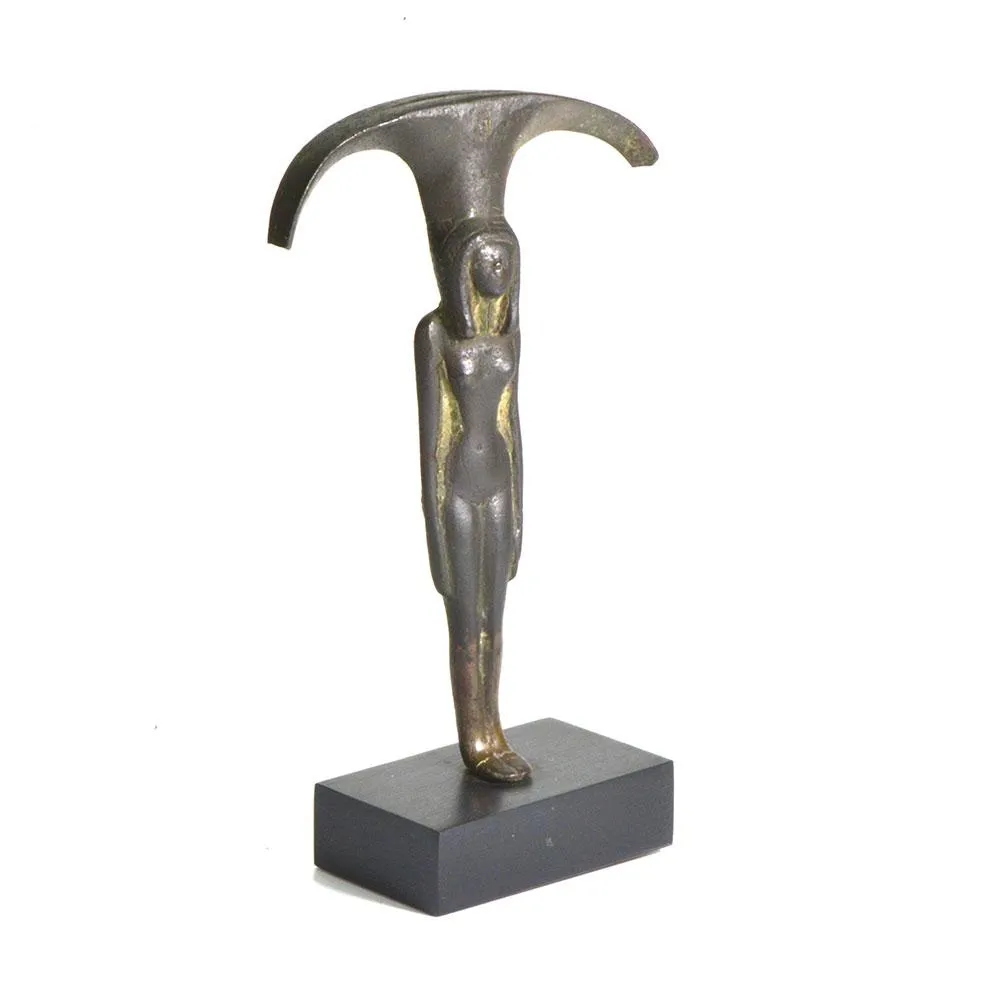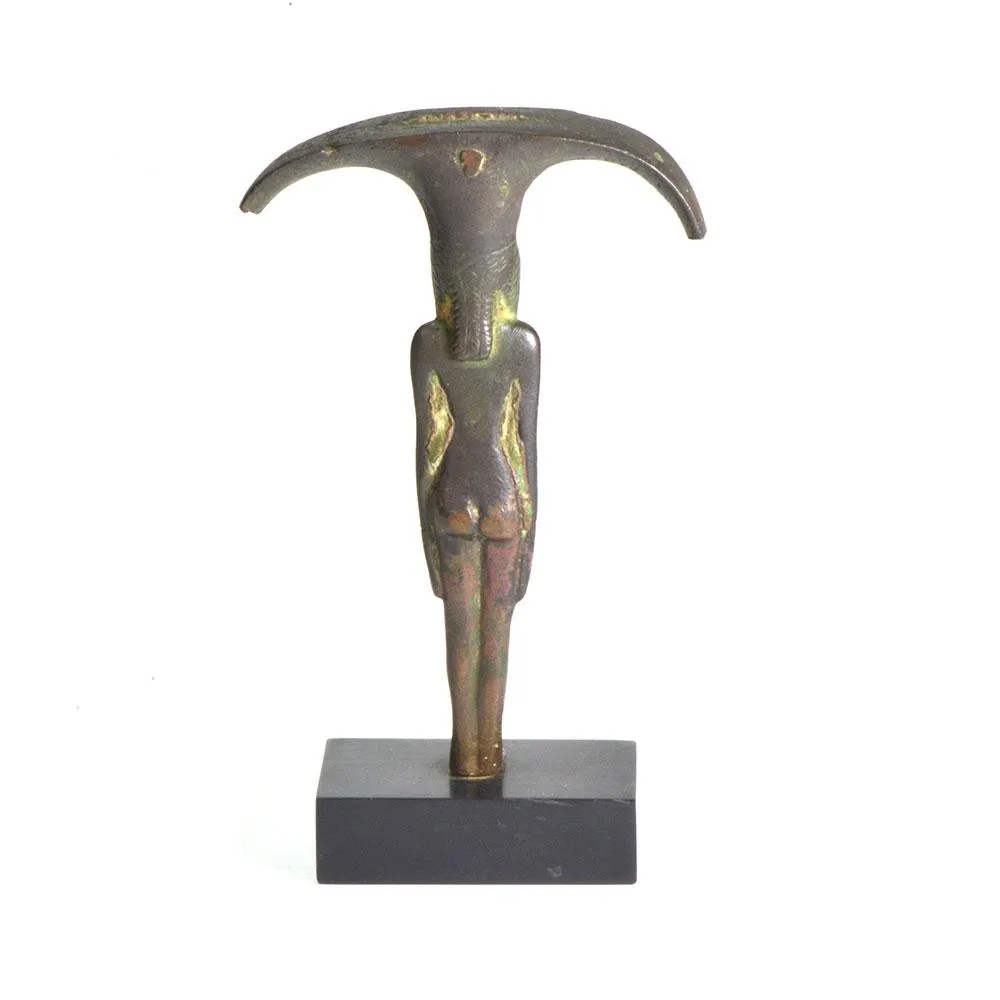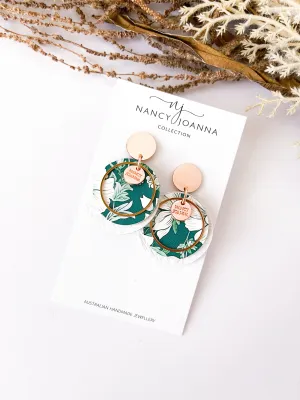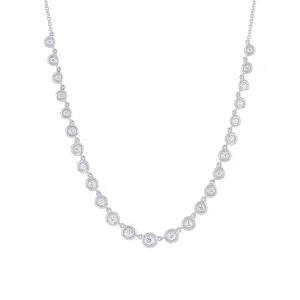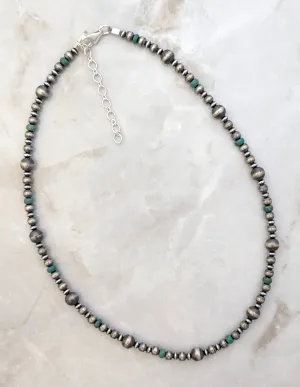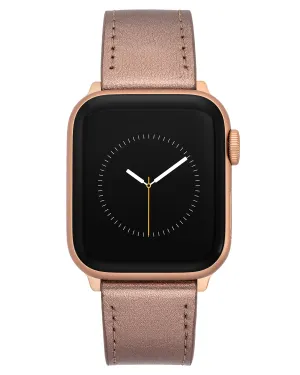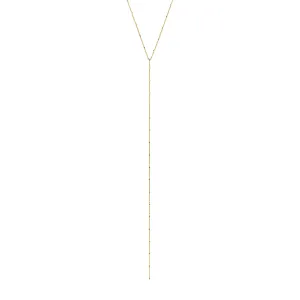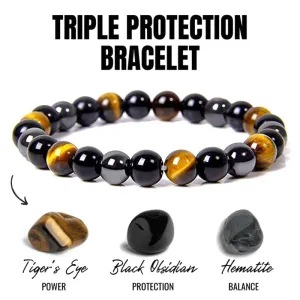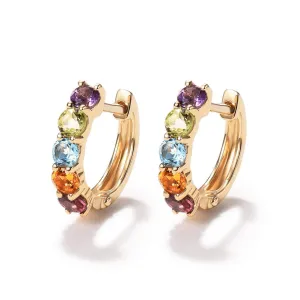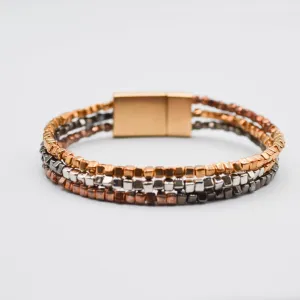A superb Egyptian bronze mirror handle of a naked woman shown with her hands by her side and wearing a hairstyle of thick braided hair popular during the middle of the 18th Dynasty. She is capped with a perfectly proportioned umbel of a papyrus plant that forms the mounting for a reflecting disc, now missing.
The identity of these erotic female figures is debated, variously attributed to generic females, to priestesses of Hathor, or even to the actual deity. Others further suggest that gazing into the mirror could actually put the viewer in contact with the goddess herself. Votive mirrors with scenes of Hathor and other goddesses etched into the surface seem to confirm this association.
Such girls were associated with fecundity and rejuvenation, and when the mirror was offered as a grave gift, it would evoke rebirth in the afterlife. Many mirrors have textile impressions, suggesting that they were covered with cloth when placed in the tomb, evoking the Jewish custom of covering the mirrors in the house of a person recently deceased.
Lacovara, Peter. The World of Ancient Egypt: A Daily Life Encyclopedia [2 volumes]: A Daily Life Encyclopedia (p. 180). ABC-CLIO. Kindle Edition.
Published: C. Derricks, Les miroirs cariatides égyptiens en bronze, Mainz, 2001, p. 150, no. 42.
Condition: Minor loss to each terminal, and small repair to feet, mirror disc now missing but the handle is complete and in excellent condition overall.
Dimensions: Height: 4 1/4 inches (10.8 cm)
Provenance: Ex Simone de Monbrison, Paris, 1978.




